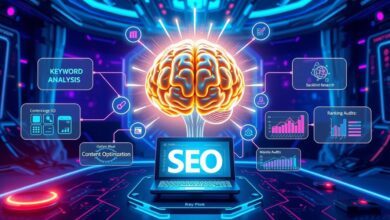 In the ever-evolving world of software development, ensuring the quality and reliability of software is more critical than ever. Artificial Intelligence (AI) has emerged as a game-changer in software testing, revolutionizing how tests are designed, executed, and analyzed. In 2024, the capabilities and features of AI-driven testing tools continue to expand, offering unprecedented efficiency and accuracy.
In the ever-evolving world of software development, ensuring the quality and reliability of software is more critical than ever. Artificial Intelligence (AI) has emerged as a game-changer in software testing, revolutionizing how tests are designed, executed, and analyzed. In 2024, the capabilities and features of AI-driven testing tools continue to expand, offering unprecedented efficiency and accuracy.
Among the top contenders in AI automation testing tools, testRigor has distinguished itself as a leader. Known for its advanced automation capabilities and user-friendly approach, testRigor exemplifies the innovations shaping the future of software testing. This article aims to provide a comprehensive guide on what to look for in AI software testing tools in 2024, emphasizing the key features and advancements to consider.
Key Features of AI Software Testing Tools
Automation Capabilities
Advanced Automation
One of the most significant advantages of AI in software testing is its ability to automate complex test cases that were traditionally handled manually. Look for tools that offer robust automation features, allowing you to automate end-to-end testing scenarios. The goal is to minimize manual efforts and maximize efficiency, enabling your team to focus on more strategic tasks.
Scriptless Testing
Codeless or scriptless testing is a critical feature to seek in modern AI testing tools. These tools should provide intuitive interfaces that allow even non-technical users to create, execute, and manage tests without writing a single line of code. This democratizes the testing process, making it accessible to a broader range of team members.
Integration with Development Tools
Seamless Integration
In today’s fast-paced development environments, seamless integration with Continuous Integration and Continuous Deployment (CI/CD) pipelines is essential. The AI testing tool should be compatible with popular development tools like Jenkins, GitHub, and Jira. This integration ensures that testing is an integral part of the development process, facilitating continuous testing and early detection of issues.
Collaboration and Communication
Effective collaboration and communication are vital for successful software testing. Look for tools that offer features facilitating team collaboration, such as shared dashboards, real-time updates, and notifications. These features help ensure that all team members are on the same page, enhancing productivity and reducing the chances of errors.
AI and Machine Learning Algorithms
Self-Healing Tests
One of the standout features of AI-driven testing tools is self-healing capabilities. These tools can automatically detect and fix issues in test scripts caused by changes in the application under test. This reduces test flakiness and maintenance efforts, ensuring that tests remain reliable and up-to-date.
Predictive Analysis
AI can significantly enhance the testing process through predictive analytics. Tools that utilize machine learning algorithms can predict potential failures and performance bottlenecks based on historical data. This proactive approach helps in identifying and addressing issues before they impact end-users.
Test Coverage and Accuracy
Comprehensive Test Coverage
Achieving comprehensive test coverage is crucial for ensuring the quality of your software. AI testing tools should be capable of covering all functionalities of your application, including edge cases and corner cases. This thorough coverage helps in identifying hidden bugs and ensuring a robust application.
Regression Testing
Efficient regression testing is another critical aspect to consider. The tool should be capable of quickly re-running tests to ensure that new code changes do not introduce new bugs. This capability is essential for maintaining software quality and reliability over time.
Usability and User Experience
Ease of Use
User-Friendly Interfaces
The usability of a testing tool significantly impacts its adoption and effectiveness. Look for tools that offer intuitive, user-friendly interfaces with customizable dashboards and reporting features. A well-designed interface makes it easier for users to navigate the tool, create tests, and analyze results.
Onboarding and Support
The quality of user onboarding experiences and available support resources can make or break the adoption of a testing tool. Ensure that the vendor provides comprehensive onboarding, including tutorials, documentation, and customer support. This support helps users quickly get up to speed and effectively utilize the tool.
Performance and Scalability
Scalability
As your testing needs grow, the tool should be able to scale accordingly. Evaluate the tool’s ability to handle large-scale testing scenarios, including parallel test execution and distributed testing environments. Scalability ensures that the tool can grow with your organization and meet increasing demands.
Speed of Execution
The speed at which tests are executed is another crucial factor. Faster test execution times mean shorter testing cycles and quicker feedback loops, allowing for more agile development processes. Look for tools that optimize test execution without compromising on accuracy.
Security and Compliance
Data Security
Ensuring Data Privacy
In an age where data privacy is paramount, it is essential to choose a testing tool that handles sensitive data securely. Ensure that the tool complies with data protection regulations like GDPR and CCPA. Data encryption, secure access controls, and anonymization features are critical to safeguarding your data.
Vulnerability Testing
Security testing should be an integral part of your testing strategy. Choose tools that offer comprehensive security testing capabilities, including vulnerability scanning and penetration testing. Identifying and mitigating security vulnerabilities early in the development process helps protect your application from potential threats.
Compliance Requirements
Regulatory Compliance
Depending on your industry, there may be specific regulatory requirements that your software must meet. The testing tool should facilitate automated compliance checks and generate reports to ensure adherence to industry standards. This capability simplifies the compliance process and helps avoid potential legal issues.
Cost and ROI
Cost-Effectiveness
Pricing Models
Evaluate the pricing models of different AI testing tools, considering factors such as subscription costs, pay-per-use options, and licensing fees. Compare the costs against the features and benefits offered to determine the best value for your investment.
Return on Investment (ROI)
Consider the long-term savings and benefits of implementing AI testing tools. Calculate the ROI by factoring in the reduction in manual testing efforts, improved test coverage, faster time-to-market, and enhanced software quality. A high ROI justifies the investment and demonstrates the value of the tool to stakeholders.
Vendor Support and Updates
Continuous Improvement
Choose a vendor that is committed to continuous improvement and innovation. Regular updates and feature enhancements ensure that the tool remains up-to-date with the latest technologies and testing methodologies. This commitment to improvement helps you stay ahead in the competitive software landscape.
Customer Support
The quality of customer support provided by the vendor is crucial. Look for vendors that offer accessible and responsive support channels, including phone, email, and chat support. A vibrant user community and extensive resources, such as forums and knowledge bases, also contribute to a positive support experience.
Conclusion
As we navigate the landscape of software development in 2024, the role of AI in software testing continues to expand and evolve. Organizations can make informed decisions that enhance their testing processes and overall software quality by understanding the key features and capabilities to look for in AI testing tools.
Recap of Key Points
We discussed the importance of advanced automation capabilities, seamless integration with development tools, AI and machine learning algorithms, comprehensive test coverage, and usability. We also highlighted the significance of data security, compliance, cost-effectiveness, and vendor support.
Future Trends in AI Software Testing
Looking ahead, we can anticipate further advancements in AI-driven testing tools, including more sophisticated self-healing tests, enhanced predictive analytics, and deeper integration with DevOps practices. Staying abreast of these trends will help organizations maintain a competitive edge.
Final Thoughts
Choosing the right AI software testing tool is a critical decision that can significantly impact your development processes and software quality. By prioritizing the features and capabilities outlined in this article, you can ensure that your testing tool meets your current needs and future challenges.







